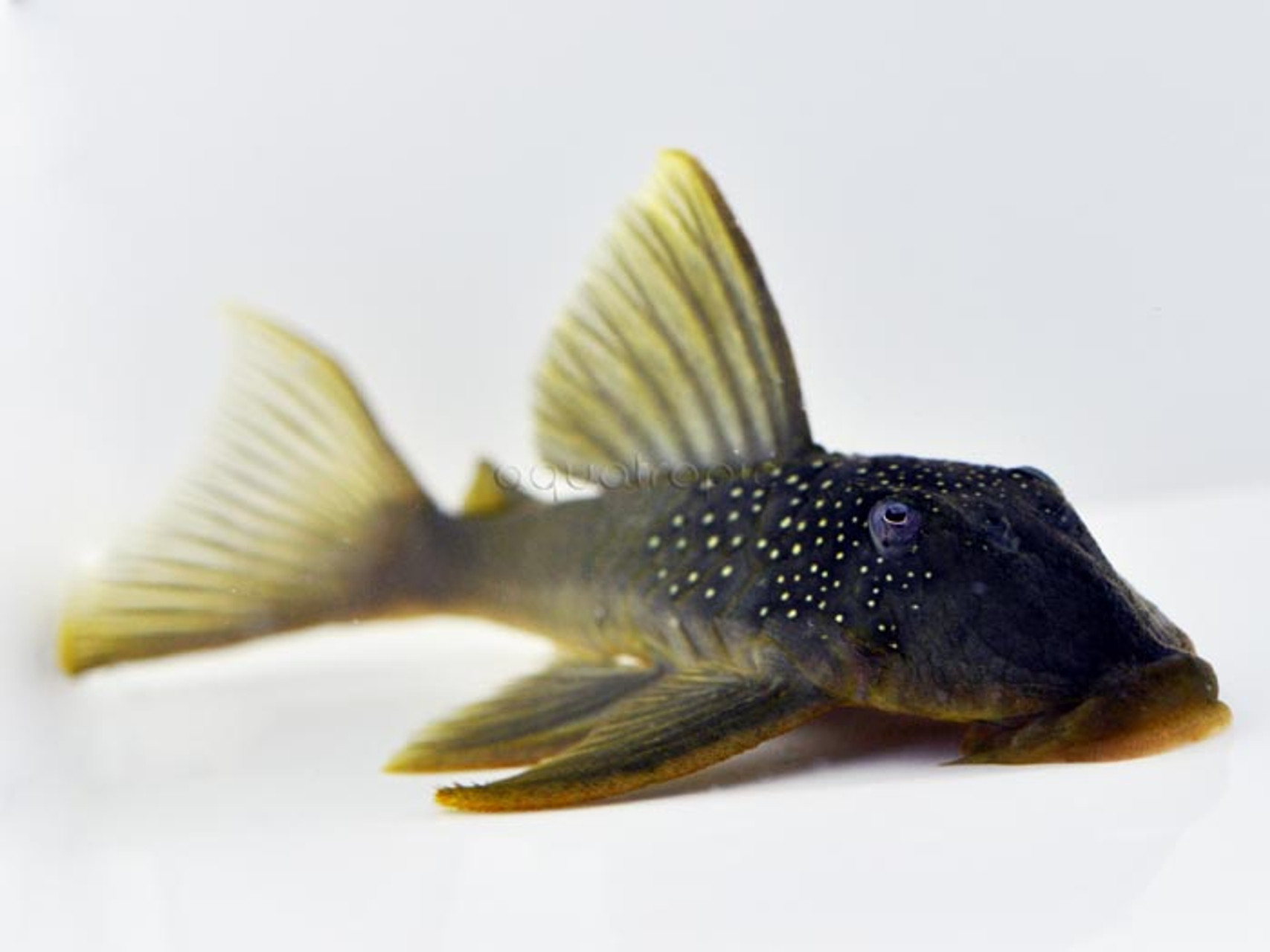The Green Phantom Pleco (Hemiancistrus subviridis)

Since it’s introduction into the aquarium trade in the 1990’s, Hemiancistrus subviridis has quickly established itself as one of the most popular species of South American loricariid catfish. Known commonly as the Green Phantom Catfish, this handsome fish sports an unusual olive-green shade to its body, accented with numerous fine yellow spots along the forebody, making it a stately addition for those aquarists looking for an algae-eater with a bit more pizzazz.
It hails from large, clearwater tributaries of the upper Rio Orinoco coursing through Colombia and Venezuela, which typically have a relatively warm temperature and a neutral to slightly acidic pH. It’s usually not vital to fully replicate these water conditions, but it is wise not to stray too far, especially if attempting to breed this fish.
Unlike some groups of armored catfish that rely more heavily on plant matter in their diet, H. subviridis is said to be more of an omnivore, feeding on both algae, detritus and any invertebrates it may come across. For this reason, it is important to offer a mix of foods in captivity, including sinking pellets, as well as frozen foods like bloodworms and shrimps. Driftwood is also recommended, which will provide a natural grazing surface. With this fish reaching a maximum size of 8 inches or more, care must be taken if live plants are to be included, as many delicate stem plants will be damaged as it bulldozes about the aquarium. Sticking to larger swordplants and rugged vegetation (Anubias, Java Fern, mosses) is a good idea.
Males tend to grow a bit larger, with a broader head and more odontodes (=short spines) on the body. This cave-spawning species can be reliably bred if kept in groups, but to do so requires a suitably large aquarium to avoid issues of aggression, especially between rival males. The juveniles are developed enough upon hatching to fend for themselves and immediately begin feeding upon prepared foods.
Finally, there are a couple very similar species that also appear in the aquarium trade. When it first became collected, this fish was identified as L200 along with another nearly identical fish with which it co-occurs—this other species is now known as the Hi-fin Green Phantom Pleco (Baryancistrus demantoides) and can be told apart by its slightly taller dorsal fin and for having a small membrane after the last dorsal fin ray that connects to the adipose fin. Another species, still unnamed and known to aquarists as the Blue Phantom Pleco L128, is found in this same river system and may or may not be a variation of H. subviridis. It can be told apart by its slight blue hue and for having more numerous spotting.